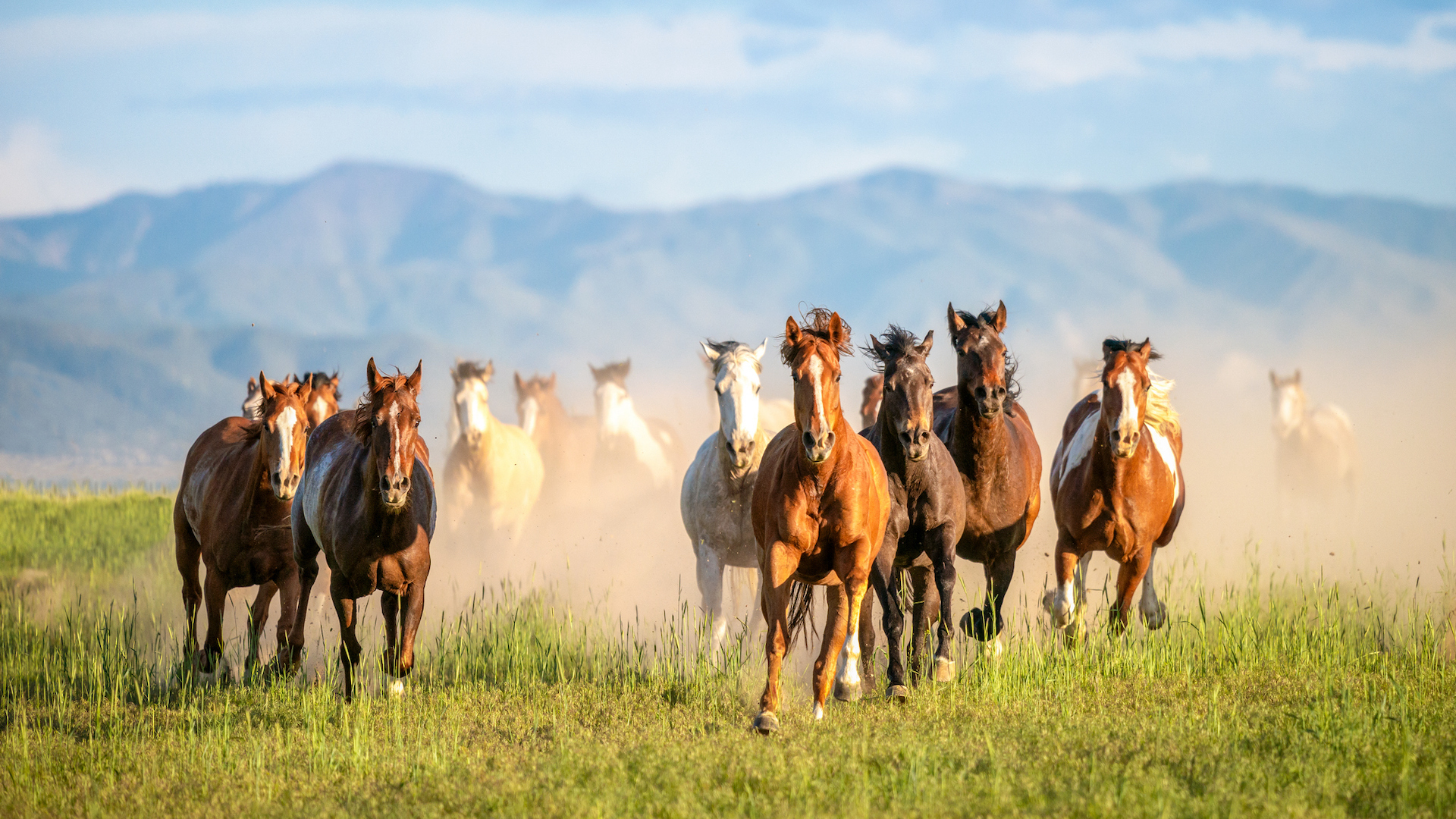
Horses have long been an integral part of America’s history, culture, and landscapes – and there are a number of horse breeds native to America. From galloping freely across the plains to carrying settlers through rugged terrains, these noble creatures represent both resilience and beauty.
It’s easy to pin the mustang of the Wild West as America’s most famous specimen, but beyond this lies a treasure trove of lesser-known native breeds, each with its unique story, characteristics, and charm. Many of these breeds, shaped by centuries of adaptation to their environments, are living legacies reflecting the diverse regions of the continent. Plus, there are some more recent additions, reflecting the changing fabric of equestrian society.
America’s native horse breeds evolved alongside the nation’s history. Some were shaped by indigenous cultures that relied on them, while others adapted to the harsh realities of wild terrains. Some are still feral; others excel in the competition arena. Each breed carries its heritage in its stride – whether it’s the hardy marsh tacky of the south-east or the iconic, spotted appaloosa of the north-west.
Knowing where your horse descends from is one of the top tips for taking care of your horse. Let’s take a closer look at the rich tapestry of horse breeds that call America home.
Horse breeds native to North America
1. American Quarter Horse

One of the most versatile breeds in the world, the American quarter horse is the fastest equine over a quarter-mile – hence the name. But besides this blistering pace, they also excel in all sorts of disciplines, from polo and jumping to reining and Western pleasure classes.
This well-muscled and compact breed is still used on ranches and has the ideal mix of toughness with a wonderful temperament that always longs to please.
2. Appaloosa

The state horse of Idaho, appaloosas are known as the spotted horse, although not all appaloosas have spots (most do) and not all spotted horses are appaloosas! Confused? The pattern of an appaloosa’s coat markings also varies widely, from the appealingly named “few spot leopard” to “marble”, “frosted blanket” – and “solid”, which has no spots at all.
The appaloosa goes back to prehistoric times when spotted horses were depicted on cave walls. The modern appaloosa was developed in the US around a century ago, chiefly as a stock horse. They excel in Western riding disciplines such as cutting, reining, roping, and barrel racing. They are also popular for movie work.
3. American Paint Horse

A hugely popular breed in the US, these beautifully marked horses excel in myriad disciplines. These colorful horses are descended from those introduced by Spanish explorers, wild mustangs, and cow ponies. The resultant, refined breed is tough, athletic, and willing while retaining a short-coupled, stock-horse physique.
Their coat pattern is a combination of white with any of the equine colors: black, bay, brown, chestnut, dun, grulla, sorrel, palomino, gray, or roan.
4. Mustang

The mustang is a free-roaming, feral horse, whose name derives from the Spanish for “stray”. They descend from horses brought over by Spanish explorers. These strong, hardy, and speedy horses are known for their intelligence and independence, however, they can be domesticated by an experienced horseman and are quick learners.
5. American Saddlebred
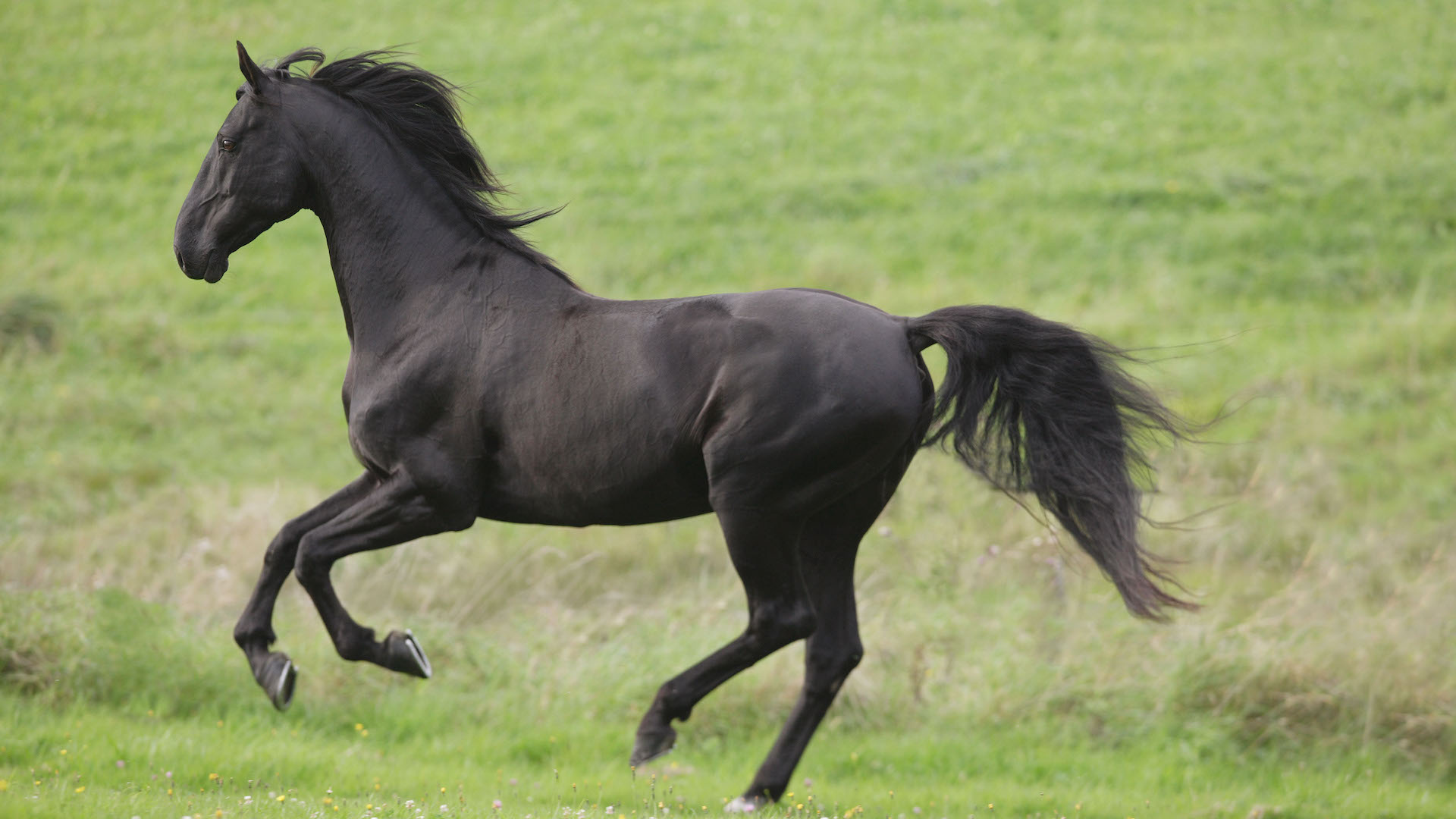
The American saddlebred is known as the “ultimate show horse”, with fluid and expressive gaits. They have great presence, with grace, elegance, and confidence, a long, shapely neck, and a high head carriage.
Brave and agile, their roots are as cavalry horses, so they have a natural dispensation for dressage, but are also used for driving, eventing, hunter jumper classes, and endurance riding.
6. Tennessee Walking Horse

A light horse breed founded in Tennessee, the walking horse is a mix of various breeds, including the Narragansett and Canadian pacer, standardbred, thoroughbred, Morgan, and saddlebred.
This docile breed has smooth and easy movement, which gives a wonderfully comfortable and pleasurable ride. It is known for its distinct gaits: the flat-foot walk, running walk, and canter. There are variations of the ultra-gliding “running walk”, which aren’t used in the show ring but are appreciated on trail rides.
7. Morgan Horse

Considered America’s first horse, the Morgan is a wonderful all-rounder. All Morgans can be traced back to an 18th-century sire called Justin Morgan, who gave his name to the breed. They were the chosen mount for soldiers as an artillery horse before the age of mechanization.
A distinctive feature is their unusual stance – they stand with their hindlegs splayed out parallel behind.
8. Rocky Mountain Horse

There is precious little official history relating to the Rocky Mountain Horse, which originated in the foothills of the Appalachian Mountains in eastern Kentucky. They were gaited, sure-footed, and comfortable workhorses, used by postmen,and doctors, to plow fields, and herd cattle and could turn their hoof to just about any job.
They have an ambling four-beat gait, and a gentle temperament and are known for being fabulous companions with superb stamina.
The traditional color is chocolate with a flaxen mane and tail but any solid body color is permitted.
9. Missouri Fox Trotter

Developed, as the name suggests, in the state of Missouri, the fox trotting horse is an easy-going and comfortable pleasure ride. They are sure-footed, with stamina aplenty, thanks to their origins as a workhorse for settlers, used to plow fields and herd cattle as well as transport the family whether on its back or in a carriage.
Nowadays they make versatile riding and show horses. The Missouri fox trotter is the official state horse of Missouri.
10. American Standardbred

The standard breed was developed to race in harness. They closely resemble the thoroughbred, whose genes it has in its ancestry while being heavier boned. They have two distinct two-beat gaits, the trot and the pace. In trot the legs move in diagonal pairs, while the pace involves both legs on each side moving together – and they can really shift!
11. Florida Cracker Horse

The official horse of Florida, the cracker horse derives from colonial Spanish breeds. They have plenty of other names, including Chickasaw, seminole and prairie pony, Florida cow pony, grass gut and more!
It is a rare breed but dates back to the 16th century. The name cracker is said to come from the noise the cowboys made with their cow whip cracking in the air. They are small riding horses, with refined and elegant heads.
12. Canadian Horse

The bay or black Canadian horse, which derives from France via Louis XIV, has had an important impact on many of the native American breeds such as the Morgan, American saddlebred, and standardbred. However, although it was well known in the US in the 19th century as being a mainstay on stagecoach routes, there was no breed association established. Many of these horses were killed in action in the cavalry.
Some Quebecois breeders took on the mantle, forming a studbook, and today this versatile riding and driving horse – cherished by both families and the mounted police – is Canada’s national breed. However, it is still on the critical list as a rare breed.
13. Nokota Horse

The Nokota have a mixed ancestry but with a Spanish colonial heritage. Often a rare blue-roan color, Nokotas have been used throughout their history as war horses, buffalo runners, and riding horses. They are athletic, brave, intelligent, and sure-footed, with a fantastic natural jump, and are sometimes described as an “equine all-terrain vehicle”.
14. Chincoteague pony

Also known as the Assateague, to reflect the island where the breed originated, the Chincoteague pony has a mélange of Arabian, mustang, Shetland, and thoroughbred heritage. They are famous for an annual swim they make across a channel to the neighboring island of Chincoteague, which draws huge crowds.
The ponies are born wild, but they are easily domesticated, bonding readily with their owners and making great riding ponies. They are known for their fabulous personalities and ability to turn their hoof to any discipline willingly.
The Chincoteague is Virginia’s state pony.
15. Paso fino
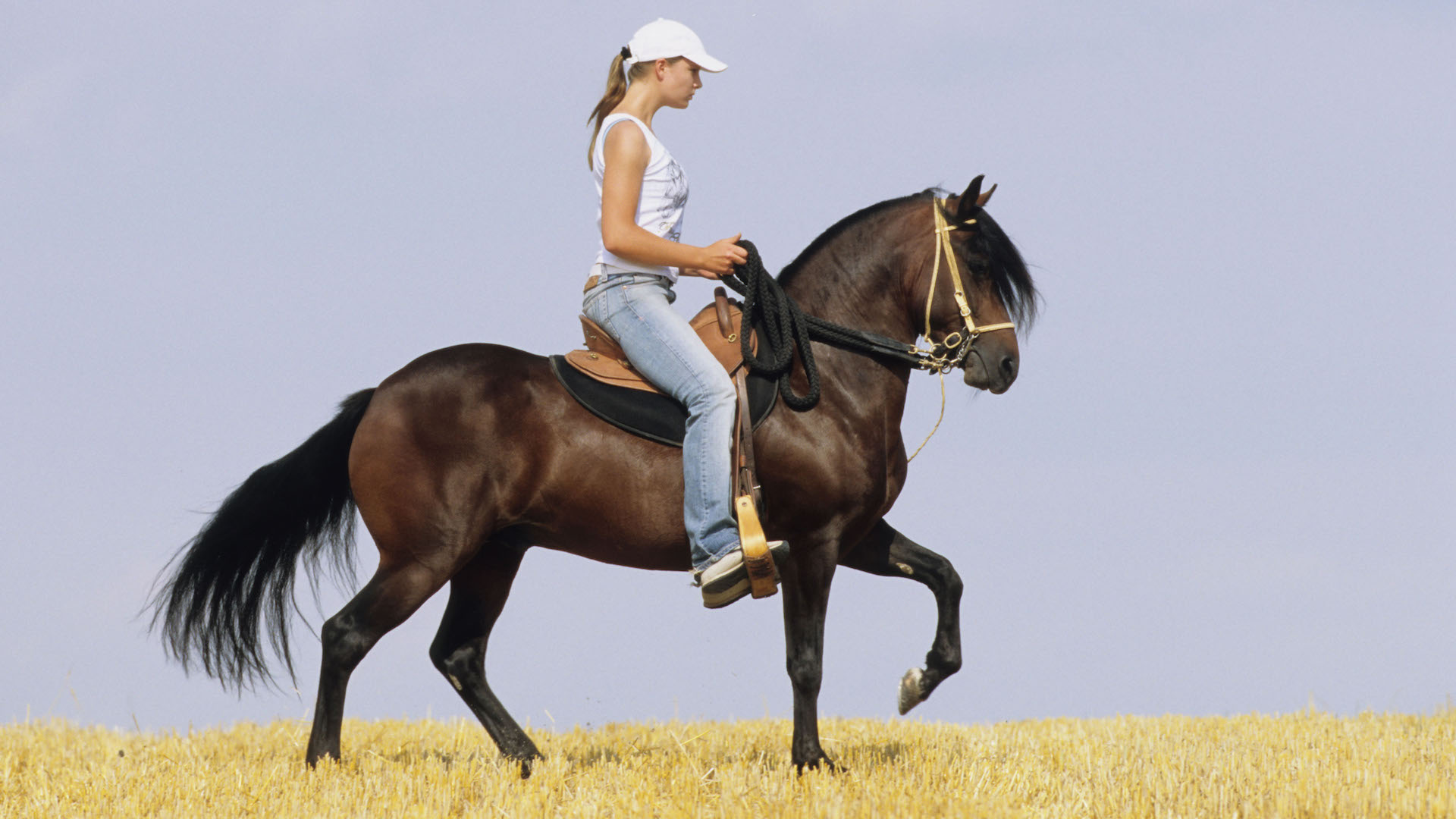
Paso fino means “light step”, which reflects the smooth and athletic gait for which the breed is renowned. Their unique movement has been given the title, “the smoothest riding horse in the world”. They are fabulous for trail rides and endurance thanks to being wonderfully comfortable in the saddle and are cherished particularly by people who have back or knee pain.
Physically, they convey both strength and power, with an elegant head and alert, intelligent eyes.
16. Sable Island Horse

Horses were introduced to Sable Island, a tiny sandbar 250km off the coast of Nova Scotia, in the 18th century, but only the toughest were able to survive – and over time have become a breed in their own right. They are feral, with long, wild manes and tails, and thick, shaggy coats. They eat the coarse Marram grass and even seaweed! Their presence on this inhospitable island has drawn some criticism but they have survived 250 years without human interference and against all odds.
17. Pryor Mountain Mustang

A wild horse herd with colonial Spanish-American heritage that lives in the Pryor Mountains near Wyoming. These tough little mustangs have made their home in this rugged mountain area over the past 200 years.
They have been at serious risk of going extinct, however, they are now protected by the Pryor Mountain Wild Mustang Center, which is dedicated to preserving the future of wild horses in the Pryor Mountains.
They come in many colors but never pinto.
18. Choctaw Horse
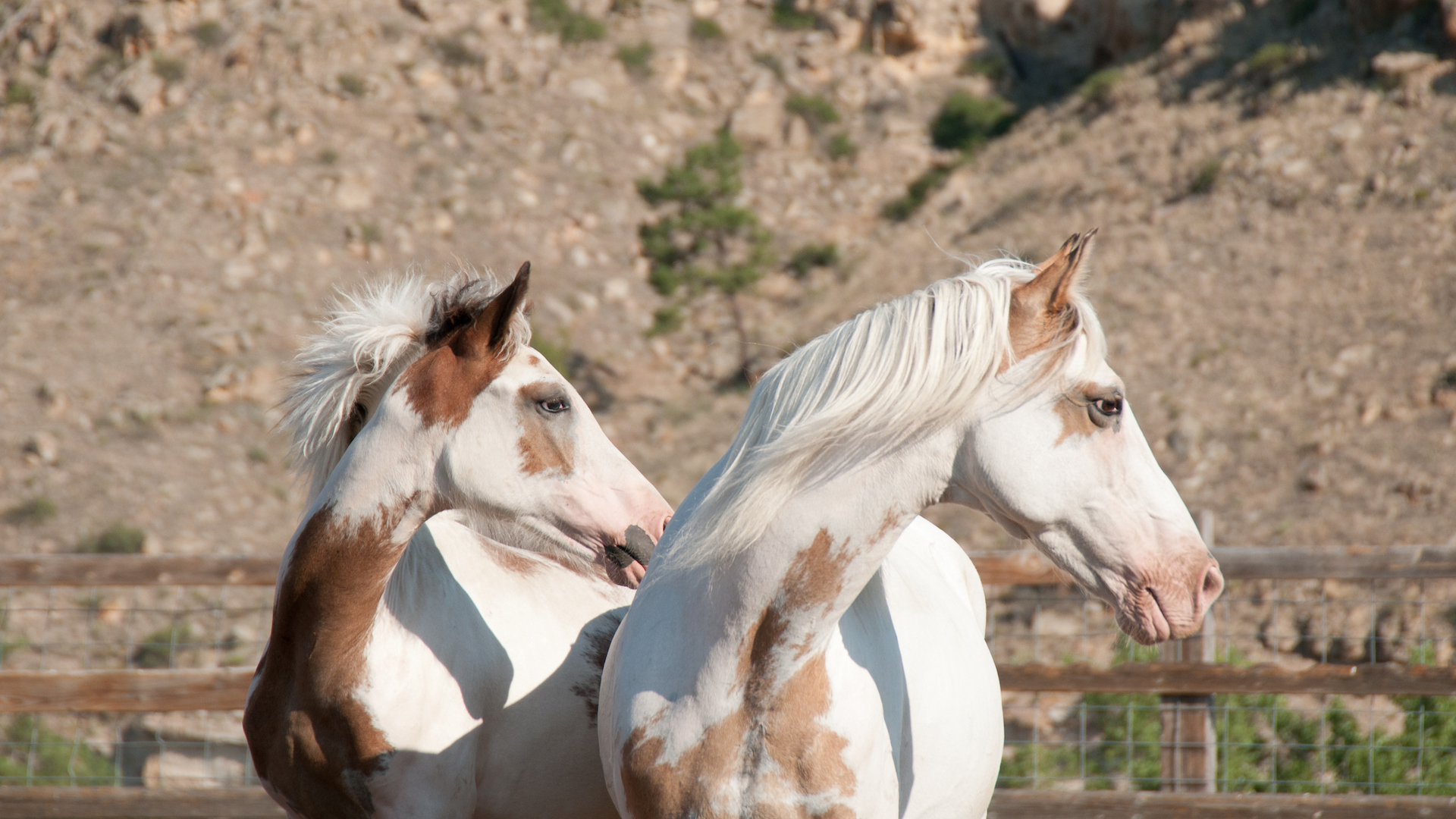
Also known as the Choctaw Indian pony, this critically endangered breed has colonial Spanish origins. It is associated with the indigenous Choctaw people, who bred it in their homeland, and it has been used for farming, trading, and later as a riding horse.
19. American Bashkir Curly

Curly horses come in all colors, sizes, and types, but carry a special gene that gives them curly winter coats, which is said to be hypoallergenic. The range of curls has appealing names such as Marcel Wave, Crushed Velvet, and Micro Curl. The degree of curl can vary from ringlets to dreadlocks, while their ear and fetlock hair – and even eyelashes – may also be curly.
The breed’s origins are vague, with some people believing they come from the Bashkir area of Russia, while official documentation states that native Americans had curly horses in North America in the early 19th century.
20. Colorado Ranger

The Colorado ranger is often mixed up with the appaloosa and it is true there is some overlap. The Colorado ranger must descend from one of the two foundation stallions, Max #2 and/or Patches #1. Although many have a spotted coat, this is not a prerequisite – it is the pedigree that confirms a horse as a Colorado ranger. In fact, they may be any color except pinto.
They are still used for their original purpose as ranch horses, but also trail and pleasure riding.
21. Racking horse
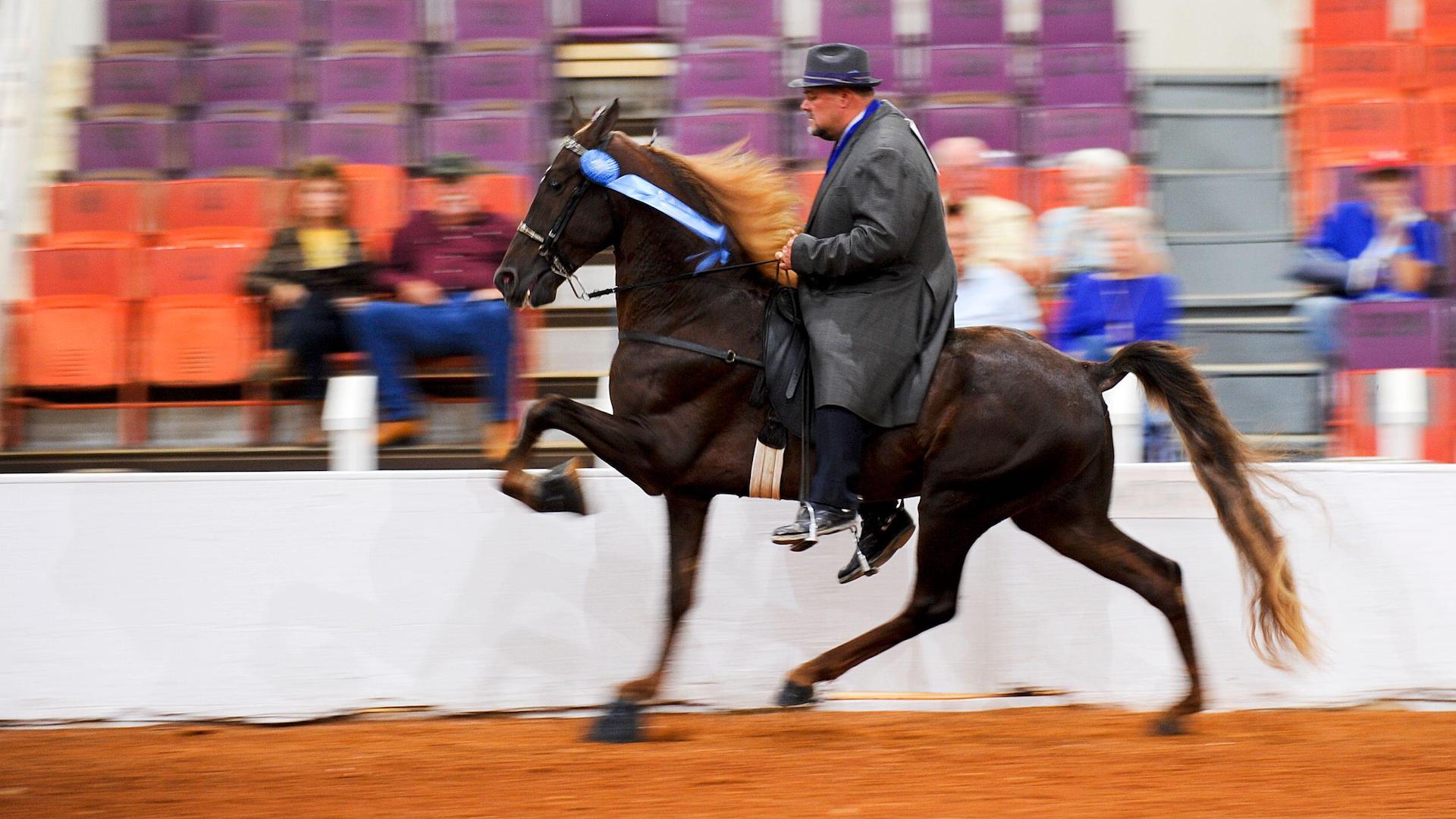
This breed is descended from the Tennessee Walking Horse and is known for its distinctive single-foot gait, which is where the horse lifts and places each foot down individually – racking – which gives a smooth ride. They are known to have a friendly and gentle temperament.
The racking horse is the official state horse of Alabama.
22. Spotted saddle horse
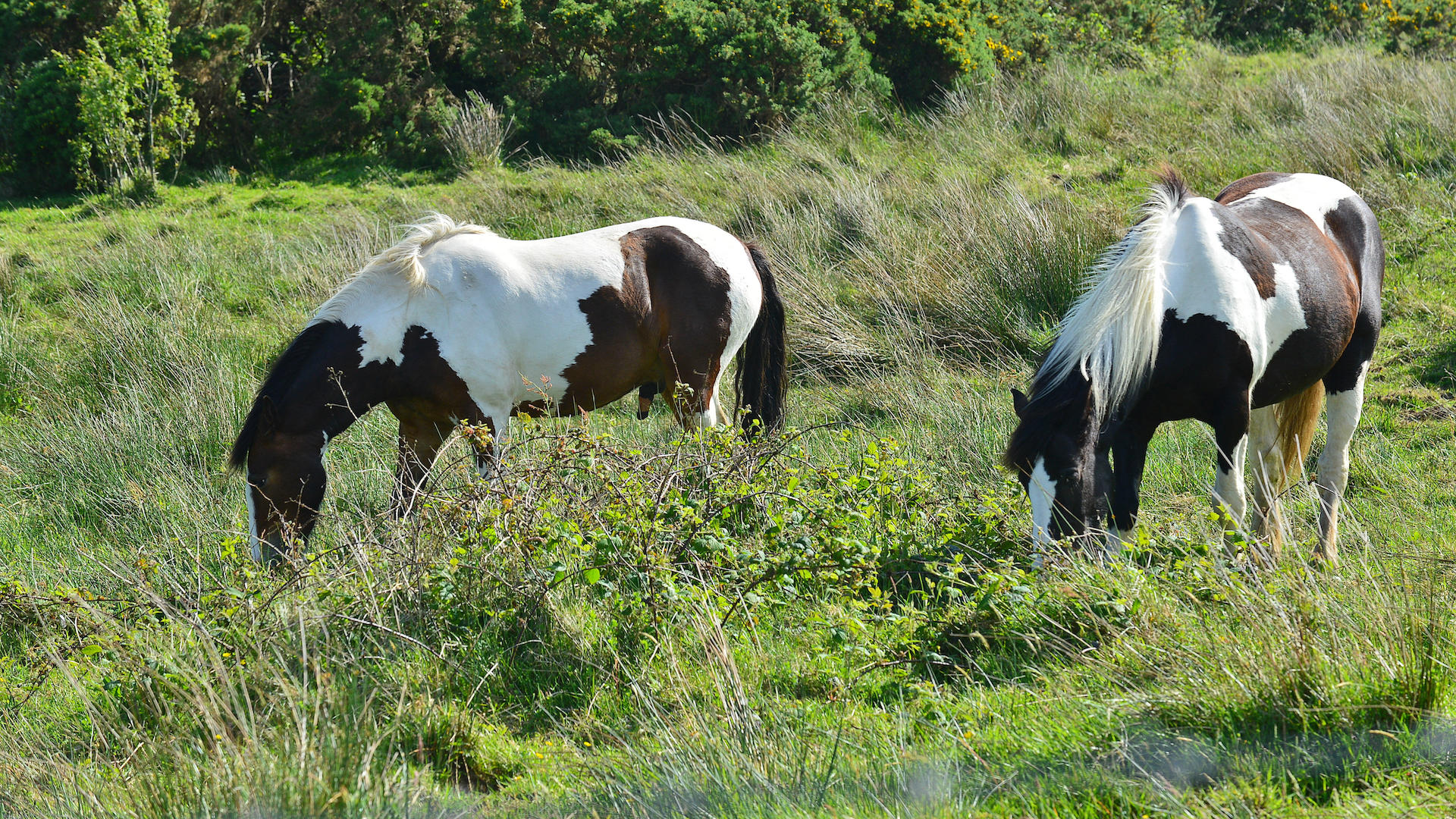
The spotted saddle horse is a mix of the pinto Spanish colonial breeds with the North American breeds such as the Morgan, and gaited breeds like the Tennessee walking horse and Paso Fino. This resulted in a colorful light riding horse with smooth gaits – being both striking and comfortable for many hours in the saddle.
Although they may have multiple breeds in their ancestry, a spotted saddle horse can be registered provided it shows the ambling gait (rather than a trot) and has a pinto coat.
23. Shackleford Banks Horse

A small, feral herd of horses living on Shackleford Banks, North Carolina. No one is sure exactly how they arrived there – there are unproven legends about horses swimming ashore from shipwrecks. What is known is that they are likely to descend from colonial Spanish horses and have adapted to the harsh environment of the Atlantic coastal islands.
These horses are pony-sized, at a maximum of 13 hands high, and live with very little interference from humans. However, geneticists consider the breed important to preserve.
24. Carolina Marsh Tacky

South Carolina’s state heritage horse, the marsh tacky is a critically endangered breed. Once a common sight as a workhorse in the swampy areas of coastal South Carolina and Georgia, as well as in mounted cavalry, the breed dwindled with the advent of the automobile.
They are similar to the Florida cracker, also descending from Spanish colonial horses. These sweet and gentle horses have a unique gait, which is likely to have developed to assist them in moving over marshland.
25. Galiceño

The Galiceño is believed to be one of the earliest Spanish colonial horses in the Americas. The Spaniards colonizing Mexico brought horses over which were then left to breed in isolation. By the mid-20th century, many were imported to the US where they thrived.
They have historically been used for ranch work – which continues to this day, and also for trail riding, barrel racing, driving, and dressage. Numbers of the Galiceño are critically low.
26. American Indian Horse

The American Indian horse – also known as the cow pony, buffalo horse, or Indian pony – comes in myriad colors, sometimes with spots, and patches in every variation possible.
These tough horses tend to have Spanish barb, Arab, mustang, or Appaloosa bloodlines and tend to be compact animals with strong and healthy hooves, and plenty of feather and coat hair. They are well-acclimatized to cope with whatever the weather throws at them, be it arid summers or freezing winters.
27. Spanish Mustang

Many of America’s native horse breeds go back to Spanish colonial horses that were brought over by the Conquistadores. The Spanish mustang is the archetype, which has influenced so many breeds over the course of history. Some say this horse even shaped the America of today.
Highly intelligent, with a sense of self-preservation coupled with a desire to please people, the Spanish mustang has an affectionate disposition, while being alert and quick to learn. Sadly, this tough, hardy breed is now on the critically endangered list.
28. Nez Perce

The Nez Perce was developed in Idaho in the late 20th century by the Native American Nez Perce tribe, crossing appaloosas with the Akhal-Teke, a central Asian breed. Their aim was to try to re-establish the type of horse traditionally bred and kept by the tribe.
Typically the Nez Perce is buckskin or palomino, often with mottled or spotted coats. Their physique is like a lean quarter horse, and they tend to be gaited with great ability in endurance races.
29. National show horse

A relatively new breed dating back to the 1980s. They are regarded as the epitome of the modern-day show horse, combining two popular breeds, the American saddlebred with the Arabian. All national show horses must have at least 50% Arabian blood.
They are typically graceful and athletic with agility and stamina.
30. American Cream Draft

The only draft breed to have originated in the US, they were developed in Iowa in the early 20th century from a mare named Old Granny. They have always been a rare breed.
Their distinctive trait is their cream coloring, which ranges from pale cream to rich gold. The mane and tail are pale, and their eyes are amber.
31. Spanish Jennet

The Spanish Jennet – also known as the pinto paso or paso tiger horse – was once the choice of the Spanish nobility, a refined horse with beauty, style, and a proud head carriage. The modern version reflects this bold and energetic heritage, and typically sports a flashy patterned coat, along with the smooth gait of the paso breed.
32. Ojibwe (Lac La Croix)

The Ojibwe horse is also known as the Lac La Croix indigenous pony – or even just the Indian pony. There is some debate whether these horses were working with indigenous people before the settlers arrived, or whether they were introduced, but either way, they are an integral part of Canadian forest culture.
They are considered a “spirit animal”, and are used in equine therapy, indigenous heritage programs, and tourism.
Love to learn more about breeds? Here are 32 dog breeds from the US.







